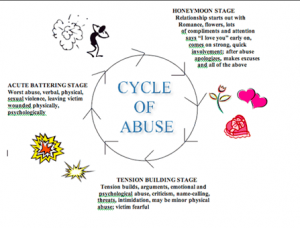
February is Teen Dating Violence Prevention and Awareness Month. According to the U.S. Department of Justice Bureau of Justice, teens between the age of 12 and 19 years old experience the highest rates of rape and sexual assault. Did you know that “one in three adolescent girls in the United States is a victim of physical, emotional or verbal abuse from a dating partner?” The statistics are very painful to read. Teens who are struggling trying to find themselves and cope with the physical and mental changes that take place as they grow; unfortunately also have to struggle to survive. Not surprisingly, there is a link to teens that inflict violence on others and teens that were abused.
Who is at risk? Our “Children and adolescents, regardless of their race, culture, or economic status, appear to be at approximately equal risk for sexual victimization.”
What are the risk factors that cause this violence?
- Exposure to Violence – When young people see violence in their own environment they are more likely to allow violence within a relationship. They may live in homes or communities where violence is prevalent and may think it is a normal way of life. Many perhaps suffered abuse and use violence as a way to act out their past frustrations. “A recent longitudinal study (Simons, Lin, & Gordon, 1998) found that although corporal punishment by a parent was not associated with later delinquency, it was associated with later teen dating violence, suggesting that corporal punishment specifically “teaches that it is both legitimate and effective to hit those you love (p. 475).”
- Acceptance of Violence – Messages of violence is so pervasive in our children’s world: on TV, on the internet, among friends, on video games, etc. Children are becoming desensitized to the pain that violence causes. I remember last year when Chris Brown was interviewed after his abusive relationship with Rhianna came to light, Chris Brown discussed how he witnessed his stepfather abusing his mother while he was a child. Chris Brown told Giant Magazine, “I remember one night he made her nose bleed. I was crying and thinking, ‘I’m just gonna go crazy on him one day.’ … I hate him to this day.” Now, the domestic abuse that transpired between his parents played out in his own life. The abusive relationship between Chris Brown and Rhianna is often written off and dismissed, but it a real life story playing over and over in the lives of many teenagers. When parents allow their children to see them being abused, their children are affected in many ways, which is a form of secondary abuse within itself and can fuel a vicious cycle.
- Common Denominator among Peers – Many teens see their friends going through the same negative violent experiences that they do, so they write it off as if it is no big deal.
- Emotional or Under-diagnosed Issues – There are times when violence escalates because the perpetrator is depressed, bi-polar, suffers insecurity, needs anger management, uses drugs or alcohol, etc.
- Unaware of Successful Relationships – In some cases violence within relationships take place because young people don’t know how to maintain positive non-violent relationships with others.
- Many have never witnessed love without hurt.
Please view the CBS news report with Katie Couric below.
Additional Resources:
- National Domestic Violence Hotline 1800.799.SAFE (7233) www.thehotline.org
- National Teen Dating Abuse Helpline: 866-331-9474
- Minnesota Coalition for Battered Women
- “The facts on Tweens and Teens and Dating Violence”, Future Without Violence
- American Psychological Association “Protecting Children From Sexual Abuse“
- Teen Dating Violence: A Review of Risk Factors and Prevention Efforts
- Futures Without Violence
- Choose Respect: Campaign to prevent teen dating violence
